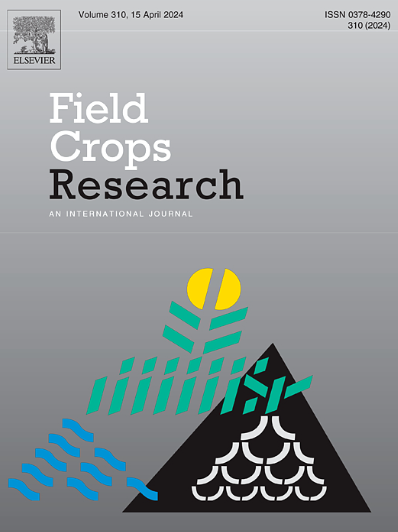Rotational grass-legume leys increase arable crop yields, particularly at low N fertiliser rates
IF 5.6
1区 农林科学
Q1 AGRONOMY
引用次数: 0
Abstract
Including perennial leys in crop rotations can increase arable crop yield and soil organic carbon content. However, ley effects are often confounded by differences in manure addition, and it is unclear how the effects change over time or are impacted by ley species. Using 48 years of data from long term experiments at three locations in Sweden, this study examined the effects of including a two-year sole-grass or mixed grass-legume ley compared with only arable crops in six-year rotations, on crop production, and soil carbon and nitrogen under different nitrogen (N) fertiliser rates but without manure additions. Rotational leys resulted in greater oilseed and cereal grain yields at zero and low N fertilisation, particularly when legumes were included in the ley. The effect was evident for grain yields throughout the rotation and similar over crop rotation cycles. However, there were no yield differences between rotations at the highest N rate. With a grass-legume ley in the rotation, less N fertiliser was required to obtain similar grain N concentrations in winter wheat as in the rotation without ley. Concentrations of topsoil C and total-N, across cycles and N rates, were higher in rotations with ley. Topsoil C was maintained between the 2nd and 8th cycle in all treatments except at the low N fertiliser rate in the rotation without ley. Including short-term grass-legume leys in crop rotations with only arable crops may be a way to reduce the dependence on N fertiliser and still maintain topsoil C.
轮作的草-豆科牧草增加了耕地作物产量,特别是在低氮肥水平下
在轮作中加入多年生轮作可提高作物产量和土壤有机碳含量。然而,粪肥添加量的差异往往混淆了ley的影响,并且不清楚其影响如何随时间变化或受ley物种的影响。本研究利用瑞典三个地点48年的长期实验数据,研究了在不同氮肥施用量但不添加粪肥的情况下,与仅种植可耕种作物相比,两年种植单草或混合草-豆科作物对作物产量和土壤碳氮的影响。在零氮和低氮施肥条件下,轮作轮作能提高油籽和谷物产量,特别是当轮作轮作中包括豆科作物时。这种效应对整个轮作周期的粮食产量很明显,在整个轮作周期中也类似。在最高施氮量下,不同轮作间的产量无显著差异。轮作禾草-豆科牧草时,冬小麦所需氮肥较少,籽粒氮浓度与不轮作时相似。表层土壤C和全氮浓度在不同循环和施氮率下均以ley轮作高。除无ley轮作低施氮量处理外,其余处理的表层土壤C在第2 ~第8循环之间保持稳定。在只有可耕作物的轮作中加入短期的草豆科植物轮作可能是一种减少对氮肥依赖并保持表层土壤C的方法。
本文章由计算机程序翻译,如有差异,请以英文原文为准。
求助全文
约1分钟内获得全文
求助全文
来源期刊

Field Crops Research
农林科学-农艺学
CiteScore
9.60
自引率
12.10%
发文量
307
审稿时长
46 days
期刊介绍:
Field Crops Research is an international journal publishing scientific articles on:
√ experimental and modelling research at field, farm and landscape levels
on temperate and tropical crops and cropping systems,
with a focus on crop ecology and physiology, agronomy, and plant genetics and breeding.
 求助内容:
求助内容: 应助结果提醒方式:
应助结果提醒方式:


